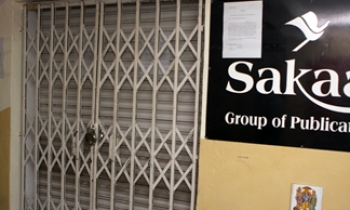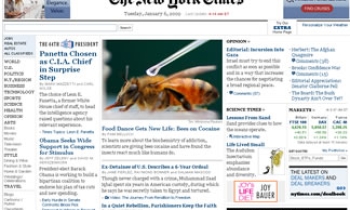Sharon Keating, a lawyer in New Orleans, grabbed her laptop as she fled Hurricane Katrina with her family in a three-car caravan. For the past 11 days, Keating has been blogging about her evacuation on the home page of About.com, a Web site owned by the New York Times Co.
Tiny details brought her account to life, such as her husband waking in a hotel and saying, "I don't own a pair of socks," and her own feelings of guilt that she couldn't stop thinking about things she left behind, including the afghan her grandmother made for her fifth birthday.
Keating is one of 500 "guides" paid to write on special-interest topics for About.com, one of the Internet's most heavily trafficked sites even though it is not well known. She usually writes a tourist guide to New Orleans, but her part-time hobby suddenly became newsy, emotional and much more widely read after Katrina devastated the city where she was born and raised.
About.com is among the many Web properties that traditional media companies have snapped up this year as they scramble to cash in on the second big Internet advertising boom. While Internet ads claim a small slice of the overall ad pie -- generating not quite $10 billion in the United States last year, less than 5 percent of all ad revenue -- the online dollars grew more than 30 percent, much faster than off-line. In response, traditional media companies have been making some startling moves.
The New York Times Co. in March paid $410 million for About.com, a seemingly disjointed collection of articles covering thousands of topics. Perhaps more surprising was the $580 million cash purchase that News Corp. announced in July of MySpace.com, another hodgepodge with more traffic than name recognition.
Three newspaper chains jointly paid $64 million for a stake in online news aggregator Topix.net, while Dow Jones & Co. bought financial site MarketWatch.com for more than $520 million and The Washington Post Co. picked up online magazine Slate for an undisclosed sum.
All of which instills deja vu in folks who follow Internet media closely. Who could forget how big media's last Internet binge ended, with Time Warner's disastrous merger with American Online? That was five years ago, just before Internet advertising tanked.
My point is not that another stock market crash lurks but that there are parallels between the two sprees. The obvious one is the fear that traditional media companies have of missing the Internet ad boat, leading some to seemingly overpay for relatively obscure Web properties. To be fair, one key difference is that today's takeover targets have real revenue and lower expenses.
About.com, for example, is an eight-year-old Web oddity with a rocky past.
It had 500 employees back in 2000 when it was sold to print magazine conglomerate Primedia for roughly $700 million in stock. Primedia had little luck with its plan to marry About to its print magazines, and by the time it unloaded the site this year, its full-time staff had dwindled to fewer than 100.
That translates to modest expenses for a site that generated roughly $40 million in revenue last year. The Times would not disclose how much it pays guides, but the rate is based on traffic and does not appear to be high (Keating said she has been earning slightly more than $500 a month).
The Times, like many media firms, is betting that original content will continue to be valuable online and that search engines won't get all the entire Internet advertising. It also is betting that niche content, in particular, will increase in value as search engines offer new ways for people to find it.
Unlike a typical news site, for example, fewer than 5 percent of About's visitors enter through its home page, according to chief executive Scott Meyer. The vast majority arrive via search engines, he said. "They may start with a search, but they find what they are looking for on About. Our tag line is, 'We provide practical solutions to everyday problems.' "
Meyer cited five goals for About -- building name recognition, improving content quality, enhancing site design, expanding revenue and boosting traffic to the larger Times network of Web sites. He hopes to add 50 guides and double About's editorial staff to 12, while coordinating ad sales more closely with the Times.
Skeptics question whether About's many static articles can generate much more in the way of ad revenue. But Keating's remarkable blogging over the past week -- along with the work of other guides who jumped in and wrote about Katrina's impact, too -- convinced me that the site has the potential to become more dynamic.









